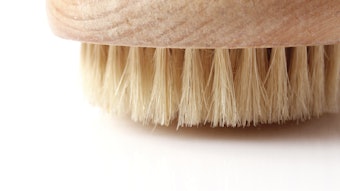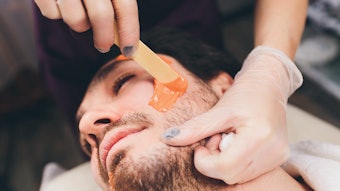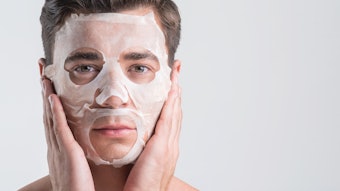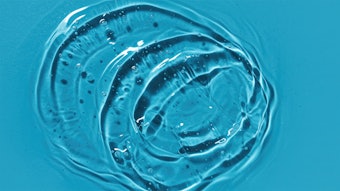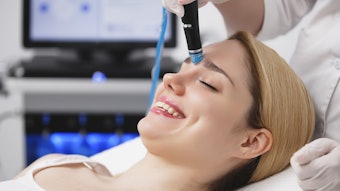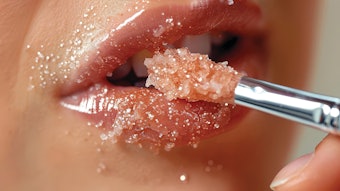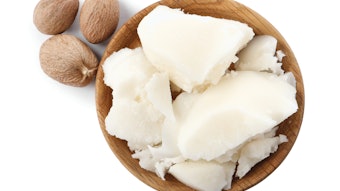Popular places on the body for contouring treatments include the hips, thighs, buttocks and abdomen. One reason for this is that the hips, thighs and buttocks are areas particularly prone to cellulite. Cellulite is a term used to define the puckered, dimpled or “orange peel”-like appearance of the skin often seen in these areas of the body. Cellulite typically begins to develop during or after puberty, so it is thought that estrogen plays a role in its development.1
Cellulite can manifest in women of all ages, races and body weights. Although weight gain can worsen the appearance of cellulite, it is noteworthy that even slender women can suffer from the appearance of cellulite.2 ,3 Thus, it is not surprising that the hips, thighs and buttocks are sites that are also popular targets for slimming treatment products.
Skin structure considerations
The outer layer of the skin reflects activity beneath its surface, especially when structural changes are occurring. Therefore, to best understand how to target slimming formulations to these areas, it is worthwhile to understand a bit more about the underlying anatomy.
The skin is composed of the epidermis and the dermis. Underlying the dermis is the hypodermis, or subcutaneous fat layer. The subcutaneous fat layer can be thought of as being composed of two sub-layers. These two sub-layers include the deeper localized fat deposits and the more superficial compartmentalized layer of fat.
Localized fat deposits typically are the targets of liposuction. Cellulite appears to originate in the fat layer where structural compartmentalization of adipose, or fat tissue, is predominant.4-6 Small, upright chambers are encircled and separated by vertical bands of connective tissue (CT), referred to as septa. The compartments are anchored to the dermis above and the tissue below. Overall, the appearance of the compartments can be described as somewhat honeycomb.
When the fat cells in these chambers become enlarged and fluid accumulates there, the chambers begin to bulge, pressing against the septa. This bulging phenomenon of the septa contributes toward the appearance of dimples and bumps on the surface of the skin in cellulite.6 With age and sun damage, the septa, composed principally of collagen, can become further weakened and thickened, resulting in shrinkage.6-8 As the septa shrink and pull on the underlying anchors of the chambers, this also can contribute to the indentations seen on the surface of the skin in cellulite. 6-8
Another hypothesis regarding cellulite notes that an inflammatory process caused by decreased circulation may also be involved. It is believed that the early structural changes leading to cellulite formation are the result of decreased circulation, which itself is the direct result of deterioration of the dermal blood vessels—especially a loss of the capillary networks.8 The loss of the capillary networks has been hypothesized to be caused by engorged fat-storing cells, called adipocytes, joining together and inhibiting venous return.
Slimming treatments
Clearly, there are a number of targets that slimming treatments can address. These areas include: enhancing the removal of fluid buildup by improving microcirculation to the areas in question; strengthening the CT while protecting it from further degradation caused by inflammation and the subsequent release of matrix metalloproteinases (MMPs), which are capable of degrading all kinds of extracellular matrix proteins; and targeting the adipose tissue via stimulation of adipocyte cell metabolism, thermogenesis or some other mechanism to decrease adipocyte contents—lipolysis, or the breaking down of fat stored in cells. Traditional and newer approaches to slimming treatments use a number of ingredients to achieve such ends, described below.9–14
Enhancing fluid build-up, improving microcirculation. A number of ingredients in slimming treatments may help to enhance fluid buildup and improve microcirculation. Rutin is a citrus flavonoid glycoside found in buckwheat, the leaves and petioles of the Rheum species, and the fruit of the Brazilian Fava D’Anta tree. Rutin possesses both anti-adipogenic and capillary-strengthening properties that can be beneficial to the reduction of cellulite.9-10
Bilberry extract has been noted to have effects on new capillary formation, as well as enhancing microcirculation.11-12 Citrus bioflavanoids from lemons, grapefruits and oranges and fruit bioflavanoids such as hesperidin, eriocitrin and flavonones from grapes, plums, apricots and cherries possess the ability to both strengthen the capillaries and regulate their permeability.13
Ginkgo biloba contains flavanoids that have been shown to have vasokinetic as well as lipolytic effects.14
Several reviews 15-19 describe botanical extracts used in cellulite treatments, some of which are briefly mentioned here.
Uva ursi, a herb derived from bearberry, juniper berries, Elymus repens (couch grass) and Agathosma betulina or A. crenultata (buchu), have been associated with loss of excess fluids in tissues, leading to improvements in water retention.
Horsechestnut is claimed to strengthen venous walls, improve circulation and target edema. Aescin, the active constituent of horsechestnut extract, has the added ability to block elastase, and hence help to preserve elastin, an important structural connective tissue responsible for blood vessel integrity and tone.
Hawthorne berry has been shown to improve blood flow, while horsetail extract has been associated with strengthening the walls of arteries and veins. Ginseng and angelica extract are known microcirculation boosters. Butcher’s broom extract (Ruscus aculeatus) contains ruscogenin and neoruscogenin, both known to strengthen veins. Finally, xanthine derivatives, such as gotu kola as noted later in this article, can also find a presence in slimming treatment formulations for their diuretic effects.
Protecting, strengthening connective tissue. The integrity of the CT in capillaries and veins is vital for their proper functioning. Likewise, the integrity of the CT of the septa in the hypodermis is important. Breakdown of the CT in the vessels leads to capillary permeability and edema, while breakdown of the CT in the septa causes the compartments of adipose to become more fragile.20 Both the blood vessels and the septa in the hypodermis play a role in the development of cellulite.20 All connective tissue, including collagen, elastin, fibronectin and various glycosaminoglycans (GAGs), can be adversely affected by matrix metalloproteinases (MMPs).
MMPs are often released by cells in response to inflammation. Examples of MMPs include various collagenases and elastases. One goal of cellulite-specific slimming formulations is to provide ingredients that target both inflammation and MMP deactivation, as well as ingredients to directly strengthen the CT. Ingredients such as retinoic acid, retinols, vitamin A derivatives and vitamin C have shown strengthening effects on CT either by direct stimulation of cells to produce healthy collagen or elastin, or by playing a supporting role in the biosynthesis of the connective tissue.17, 20
Antioxidants in a formulation can also help to alleviate the inflammation and resultant release of MMPs that target the destruction of CT.21 The choice of antioxidants is extensive and includes ingredients such as: grape seed extract; green and white tea extracts; vitamins C and E; coenzyme Q10; genistein; lycopene; carotenoids, such as beta-carotene and lutein; pomegranate extract; alpha lipoic acid; reservatrol; and pine bark extract. Other potential sources of antioxidants include spices such as garlic, onion, turmeric, rosemary, sage, thyme and oregano.
Impacting adipose tissue. One class of ingredients commonly seen in slimming treatment products includes xanthines and xanthine derivatives. Xanthines are a class of pharmacological actives called beta-adrenergic agonists. Although xanthines have a number of well-known pharmacological effects, the main reason they are included in slimming product formulations is because of their ability to stimulate lipolysis, the breakdown of fat stored as triglycerides. More specifically, xanthine and xanthine derivatives work by inhibiting phosphodiesterase, which ultimately leads to the conversion of triglycerides into free fatty acids and glycerol. Examples of xanthine derivatives include caffeine, theobromine, theophylline and aminophylline.
Xanthine and xanthine derivatives can be found in natural sources such as coffee beans, kola nut extract, guarana seeds, Chinese black tea, chocolate and plants such as yerba mate. Xanthines are also known to possess mild diuretic effects, so they can be included in slimming product formulations for this reason, as well. Xanthine derivatives are not the only materials used to target lipolysis. Milk thistle is an herb that has been used medicinally for its lipotropic ability to help remove fatty substances from the liver.22 Cayenne extract has been associated with increased thermogenesis.23 A new use for cinnamon may gain more popularity as recent research in adipocytes notes its lipotropic ability as well its insulin-mimetic effects that are due to a water-soluble chemical constituent called methylhydroxychalcone polymer (MHCP).24-25
Other popular ingredients in the supplement arena that may have potential in targeting lipolysis in slimming treatments include Citrus aurantium (bitter orange) and green tea extracts. Franchi et al. describe how advances in adipocyte physiology and metabolism have led to a greater ability to demonstrate active ingredient efficacy in slimming formulations.26 It is noteworthy that at least one contract laboratory with a facility in France offers a full range of in-vitro screening for the efficacy of actives targeting lipolysis and lipogenesis through the implementation of human adipocytes/preadipocytes.
Mesotherapy
Slimming formulations can and have drawn from a vast repertoire of active ingredients to produce desired effects. However, the newest method of body contouring to reach the United States may begin to influence not only the ingredients contained in slimming treatments, but also the delivery system of these ingredients.
Mesotherapy was first pioneered by the French physician Michel Pistor in 1958 and was employed traditionally for pain relief.27–29 It has since evolved as a means of weight reduction without liposuction. The theory behind mesotherapy, or any microinjection, is that the fat-dissolving ingredients are administered directly to the body areas that require treatment. The procedure is touted as risk-free, painless and clinically targeted at areas to slim such as the abdomen, thighs and hips. It is believed that the mesoactive substances that are directly administered stimulate the metabolism of fat cells and accelerate their elimination.
Mesotherapy is described as a minimally invasive procedure targeting problem areas of the body using microinjections of homeopathic medicines, vitamins, minerals and amino acids. Specifically, mesotherapy has been used to target cellulite, weight reduction and to help eliminate localized fat deposits.
A similar treatment for localized fat reduction was popularized in Brazil. The Brazilian treatment utilized injections of a combination of phosphatidylcholine and deoxycholate as an emulsifier to dissolve fat and remove small pockets of adipose tissue.30 Such injections have since become synonymous with mesotherapy, although their history and technique are distinct.
A recent article by Rotunda and Avram notes that experimental studies using individual mesotherapy ingredients for other conditions suggest a number of mechanisms—including lipolysis, disruption of CT and augmentation of circulation—which theoretically may improve cellulite; however, according to the article, peer-reviewed studies have not evaluated whether these effects translate clinically.31
Whether mesotherapy is effective or not, the concept of targeted slimming may find its way into product formulations, just as the beauty industry has creatively and elegantly borrowed technology from other invasive dermatological procedures resulting in products such as Botox*-in-a-bottle or laser treatments without a laser. Perhaps a creative combination can be made from both mesotherapy and Botox? This is not such a far-fetched a concept. Lim and Seet note methods whereby the denervation of adipose tissue results in lipoatrophy, leading to the theory that chemodenervations using botulinin toxin may achieve the same result—fat loss.32
One compelling reason for the development of a cosmetic equivalent to mesotherapy is given in a recent report by the Centers for Disease Control that describes an outbreak of mesotherapy-associated skin reactions.33 An effective, noninvasive cosmetic substitute for any invasive treatment, slimming included, might provide a safer, more marketable, alternative.
*Botox is a registered trade name of Allergan Inc., Irvine, CA.
REFERENCES
1. ZD Draelos and KD Marenus, Cellulite. Etiology and purported treatment, Dermatol Surg 23 12 1177–1181 (1997)
2. B Querleux et al, Anatomy and physiology of subcutaneous adipose tissue by in vivo magnetic resonance imaging and spectroscopy: Relationship with sex and presence of cellulite, Skin Res Technol 8 2 118–124 (2002)
3. MM Avram, Cellulite: A review of its physiology and treatment, J Cosmet Laser Ther 6 4 181–185 (2004)
4. F Mirrashet et al, Pilot study of dermal and subcutaneous fat structures by MRI in individuals who differ in gender, BMI and cellulite grading, Skin Res Technol 10 3 161–168 (2004)
5. Rosenbaum M et al, An exploratory investigation of the morphology and biochemistry of cellulite, Plast Reconstr Surg 101 7 1934–1939 (1998)
6. GE Pierard et al, Cellulite: From standing fat herniation to hypodermal stretch marks, Am J Dermatopathol 22 1 34–37 (2000)
7. AB Rossi and AL Vergnanini, Cellulite: A review, J Eur Acad Dermatol Venereol 14 4 251–262 (2000)
8. LK Smalls et al, Quantitative model of cellulite: Three-dimensional skin surface topography, biophysical characterization and relationship to human perception, J Cosmet Sci 56 2 105–120 (2005)
9. I Choi et al, Anti-adipogenic activity of rutin in 3T3-L1 cells and mice fed with high fat diet, Biofactors 26 4 273-81 (2006)
10. ML Xia et al, Rutin-induced endothelium-dependent vasorelaxation in rat aortic rings and underlying mechanism, Conf Proc IEEE Eng Med Biol Soc 6 1 5595-7 (2005)
11. D Bagchi et al, Anti-angiogenic, antioxidant, and anti-carcinogenic properties of a novel anthocyanin-rich berry extract formula, Biochemistry 69 1 75-80 (2004)
12. S Roy et al, Anti-angiogenic property of edible berries, Free Radic Res. 36 9 1023-31 (2002)
13. DR Bell et al, Direct vasoactive and vasoprotective properties of anthocyanin-rich extracts, J Appl Physiol, 100 4 1164-70 (2006)
14. M Lis-Balchin, Parallel placebo-controlled clinical study of a mixture of herbs sold as a remedy for cellulite, Phytother Res 13 7 627–629 (1999)
15. D Hexsel et al, Botanical extracts used in the treatment of cellulite, Dermatol Surg 31 866–872 (2005)
16. BI Dickinson and ML Gora-Harper, Aminophylline for cellulite removal, Ann Pharmacother 30 3 292–293 (1996)
17. C Bertin et al, A double-blind evaluation of the activity of an anti-cellulite product containing retinol, caffeine and ruscogenine by a combination of several non-invasive methods, J Cosmet Sci 52 4 199–210 (2001)
18. J Rao et al, A double-blinded randomized trial testing the tolerability and efficacy of a novel topical agent with and without occlusion for the treatment of cellulite: A study and review of the literature, J Drugs Dermatol 3 4 417-25 (2004)
19. EL Sainio et al, Ingredients and safety of cellulite creams, Eur J Dermatol 10 8 596-603 (2000)
20. C Pierard-Franchimont et al, A randomized, placebo-controlled trial of topical retinol in the treatment of cellulite, Am J Clin Dermatol 1 6 369–374 (2000)
21. Andreassi M et al, Antioxidants in dermocosmetology: From the laboratory to clinical application, J Cosmet Dermatol 2 3-4 153-60 (Jul 2003)
22. R Gazak, D Walterova and V Kren, Silybin and silymarin—New and emerging applications in medicine, Curr Med Chem 14 3 315-38 (2007)
23. Ohnuki Ket al, CH-19 sweet, a non-pungent cultivar of red pepper, increased body temperature and oxygen consumption in humans, Biosci Biotechnol Biochem 65 9 2033-6 (2001)
24. H Cao et al., Cinnamon extract and polyphenols affect the expression of tristetraprolin, insulin receptor, and glucose transporter 4 in mouse 3T3-L1 adipocytes, Arch Biochem Biophys (Jan 25, 2007)
25. B Roffey et al., Cinnamon water extracts increase glucose uptake but inhibit adiponectin secretion in 3T3-L1 adipose cells, Mol Nutr Food Res 50 8 739-45 (2006)
26. J Franchi et al, The adipocyte in the history of slimming agents, Pathol Biol (Paris) 51 5 244–247 (2003)
27. PT Rose and M Morgan, Histological changes associated with mesotherapy for fat dissolution, J Cosmet Laser Ther 7 1 17–19 (2005)
28. A Matarasso et al, Mesotherapy for body contouring, Plast Reonstru Surg 115 5 1420–1424 (2005)
29. RJ Rohrich, Mesotherapy: What is it? Does it work? Plast Reconstru Surg 115 5 1425 (2005)
30. AM Rotunda and MS Kolodney, Mesotherapy and phosphatidylcholine injections: Historical clarification and review, Dermatol Surg 32 4 465–480 (2006)
31. AM Rotunda et al, Cellulite: Is there a role for injectables? J Cosmet Laser Ther 7 3–4 147-154 (2005)
32. EC Lim and RC Seet, Botulinum toxin injections to reduce adiposity: Possibility or fat chance? Med Hypotheses 67 5 1086–1089 (2006)
33. Morbitity and Mortality Weekly Report (MMWR), Center for Disease Control (CDC) 54 44 1127–1130 (Nov 11, 2005)
